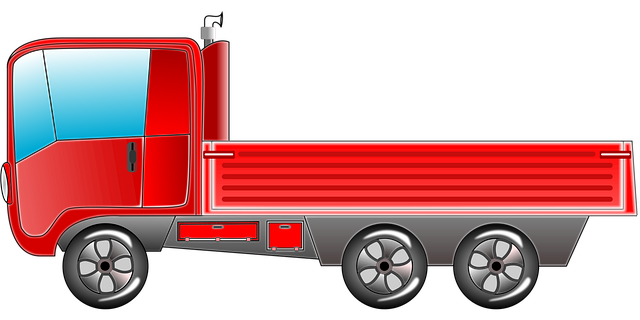Looking to register your car in California? This guide breaks down the process step-by-step, from understanding key requirements to completing the registration at a California DMV office. We’ll walk you through gathering essential documents for VIN verification, performing a crucial VIN check, and paying associated fees. By following these clear instructions, you’ll be on your way to becoming a California vehicle owner in no time.
- Understand California Car Registration Requirements
- Gather Necessary Documents for Vin Verification
- Perform Vehicle Identification Number (Vin) Check
- Select a California Motor Vehicle Office (DMV)
- Complete Car Registration Process & Pay Fees
Understand California Car Registration Requirements

Before registering your car in California, it’s crucial to understand the state’s specific requirements for vehicle registration. One key aspect is ensuring a valid and accurate Vehicle Identification Number (VIN) verification. This process confirms the vehicle’s authenticity and helps prevent fraud. In California, you’ll need to provide a completed Form REG 215, along with other necessary documents like proof of insurance, registration from another state, or proof of ownership.
Additionally, a mobile VIN verifier can be beneficial during this process. These services allow for convenient and quick VIN inspections, ensuring that your vehicle’s history is checked against national databases to verify its authenticity. This step is essential to meet California’s standards and avoid any potential issues during registration.
Gather Necessary Documents for Vin Verification

Before registering your car in California, you’ll need to gather several key documents for a successful VIN verification process. This includes your vehicle’s registration certificate from the previous state, a valid driver’s license, and proof of insurance. Additionally, you’ll require the Vehicle Identification Number (VIN) report, which can be obtained through a mobile vin inspection or by visiting a California Department of Motor Vehicles (DMV) office.
Ensure all documents are up-to-date and accurate to streamline the registration process. For instance, if you’ve recently purchased a used car, arrange for a vin inspection to verify its history and ensure it meets California’s standards before proceeding with registration.
Perform Vehicle Identification Number (Vin) Check

Before registering your car in California, it’s crucial to perform a Vehicle Identification Number (VIN) check. This step is essential for verifying the vehicle’s history and ensuring it’s free from any outstanding issues or previous damage. A mobile VIN verifier can be utilized to conduct this inspection conveniently, allowing you to cross-reference the information with reputable databases that provide detailed reports on the vehicle’s past, including accident records, odometer readings, and ownership histories.
Conducting a thorough VIN verification is a critical part of the registration process. It enables you to take informed decisions about your purchase and helps in avoiding potential problems later. For instance, a mobile vin inspection can reveal if the car has been in any significant accidents or if there are outstanding loans on the vehicle, which are important considerations when owning and registering a car in California.
Select a California Motor Vehicle Office (DMV)

When registering your car in California, the first step is to choose a convenient California Motor Vehicle Office (DMV) location. The DMV offers both in-person and online services for vehicle registration. To ensure a smooth process, consider factors like office hours, wait times, and the availability of specialized services. Many DMVs also provide mobile vin verification services, allowing you to get a quick and accurate VIN inspection without having to visit a branch.
For added convenience, some locations offer dedicated lanes for specific tasks, such as registration renewals or title transfers. Keep in mind that certain services might require an appointment, so it’s advisable to check ahead of time, especially for more complex transactions. By strategically selecting your DMV location and taking advantage of available mobile vin verifier options, you can streamline the car registration process in California.
Complete Car Registration Process & Pay Fees

To complete the car registration process in California, you’ll need to go through several steps and pay associated fees. Once you’ve gathered all required documents—including proof of insurance, vehicle inspection certificate (if applicable), and a completed Application for Title and Registration (Form DV-140)—it’s time to initiate vin verification. This crucial step involves validating your vehicle’s unique identifier, known as the Vehicle Identification Number (VIN). You can complete this process online through the California Department of Motor Vehicles (DMV) website or in person at a local DMV office.
If you opt for a mobile vin verification service using a mobile vin verifier or vin inspection, this step becomes even more convenient. These services allow you to verify your VIN outside traditional DMV locations, potentially saving you time and effort. After successful vin verification, you’ll be ready to pay the registration fees, which may vary based on vehicle type and age. Ensure you understand all applicable charges before finalizing the transaction.
Registering a car in California involves understanding state requirements, gathering essential documents, and completing a straightforward process. After performing a VIN verification to ensure all details match, choose a convenient California Motor Vehicle Office (DMV) location. Once there, follow the steps to register your vehicle and pay the required fees, ensuring your car is legally registered and ready to hit the road. Remember, proper vin verification is key in this process.
